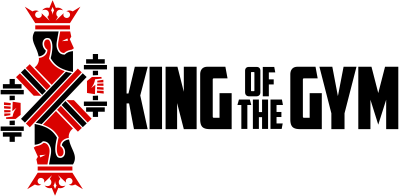Table of Contents
| Exercise Name | Cable Face Pull (with external rotation) |
|---|---|
| Also Called | Cable Neutral Grip Face Pull |
| Primary Muscles | Shoulder (Rear Deltoid) |
| Secondary Muscles | Upper Back |
| Function | Strength, Mobility |
| Mechanics | Compound |
| Force | Pull |
| Required Equipment | Cable, Double Rope Attachment |
| Experience | Beginner |
| Rep Range | 8-20 |
| Tempo | 2-1-1-0 |
| Variations | Pronated Grip Face Pull, Band Face Pull, Seated Face Pull, Lying Face Pull |
| Alternatives | Scapular Wall Slide, Bent Over Lateral Raise, Rear Delt Row, Reverse Flye, YTWL |
Cable Face Pull Instructions
Note: Pictures coming soon!
1. Starting Position
- Set pulley at lower chest height.
- Grasp ropes with a close neutral grip (knuckles verical, rubber rope ends up).
- Extend arms in front; step back to lift weight slightly off stack.
- Assume a long staggered stance with leading knee slightly bent.
- Maintain an upright, neutral spine throughout the movement.
2. Concentric Repetition
- Pull ropes to either side of head; progessively moving hands apart while pulling.
- This involves: elbow flexion, upward scapular rotation, scapular retraction, transverse shoulder abduction and external shoulder rotation.
3. Midpoint
- Pause and squeeze upper back muscles emphatically.
4. Eccentric Repetition
- Reverse motion to return to starting point.
5. Repeat
- Repeat motion for the number of reps left in the set.
- I recommend the 8-20 rep range. Higher reps (i.e. 20-30+) can work for pure mobility training; not strength or muscle development.
Common Face Pull Errors to Avoid
| Mistake: | Solution: |
|---|---|
| Using back flexion | Although it helps to lean back slightly, you must maintain a rigid body in doing so. Don’t bend at waist or hips to swing your torso back. Tense your abs but let your torso to elongate. Also, see tip #4 for a useful trick. |
| No upward scapular rotation | Don’t just to go through the motions without activating the upward rotators (i.e. lower/upper traps, serratus). It can be challenging, but try to “feel” your scapulae move upward and tilt backward (i.e. top goes back, bottom comes forward) when pulling the ropes. See tip #9 if you can’t get it. |
Face Pull Tips
- Use a long staggered stance. The leading foot should be about one “pace” in front of the trailing foot. This type of stance provides superior balance and stability.
- Stand firmly on ground so that your body remains grounded and unswaying throughout the movement.
- Raise your elbows up and out as you pull the rope toward your face. This keeps the focus off of your lats, and on your trapezius.
- Upon completing concentric repetition, your position should resemble that of the “front double biceps” pose.
- Have someone touch your spine, between the shoulder blades. This is a useful way to prevent your from moving back.
- Try a pronated grip. The neutral grip (described above), involves significantly more external rotation. Stick with that one if you’ve got hunched shoulders. If your posture is relatively healthy, consider the pronated grip.
- Adjust pulley height to vary the angle of pull. Although the pulley is typically near lower chest height, it is often done at lower or higher heights. Use whichever height setting is most natural for you.
- Extend your thoracic spine and tighten your abs to elongate your torso as much as possible; a position conducive for proper scapular mobility.
- Do face pulls at the end of your workout. They’re most effective at this time because:
- They don’t intefere with your major lifts
- The major muscle groups that could otherwise “overshadow” the target muscles, will likely be fatigued from prior lifts.
- Perform mobility work before your set to improve scapular/shoulder/thoracic spine mobility. This will serve you well if you just can’t seem to activate the target muscles. Even if the technique is easy for you, it’s a good habit. Choose one or more:
Is This Exercise Right for You?
The face pull is an incredible exercise. It can be an invaluable tool for all lifters, regardless of experience.
It’s a great idea for beginners to incorporate face pulls into their routine. Making this movement a habit early on, can prevent many postural and mobility issues that plague seasoned lifters.
Most experienced lifters, especially those who have developed hunched shoulders, can and should do face pulls regularly. It can help reverse/prevent poor posture.
With that all said, this is just one exercise. You should strategically include other movements for a complete mobility and posture solution. Of course, your strategy depends on your needs (e.g. posture type) and goals (e.g. correct posture vs. maintain good posture).
While the vast majority of trainees should do this exercise, a few should avoid face pulls. This includes those with:
- Shoulder or scapular injuries that would likely worsen or produce pain when doing the movement.
- Overdeveloped upward rotators (lower traps/upper traps, serratus) and underdeveloped downward rotators (rhomboids, levator scapulae); very rare.

